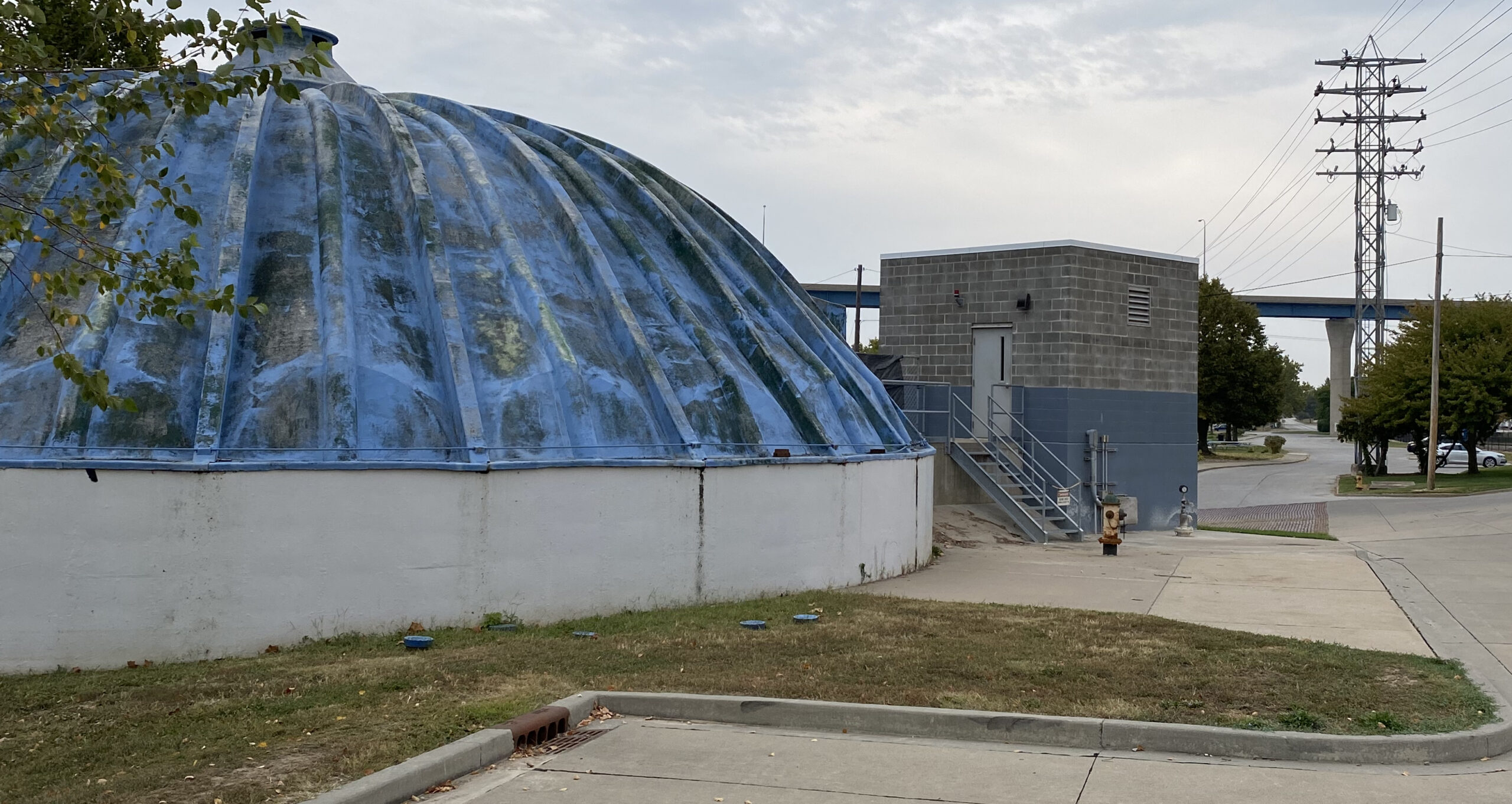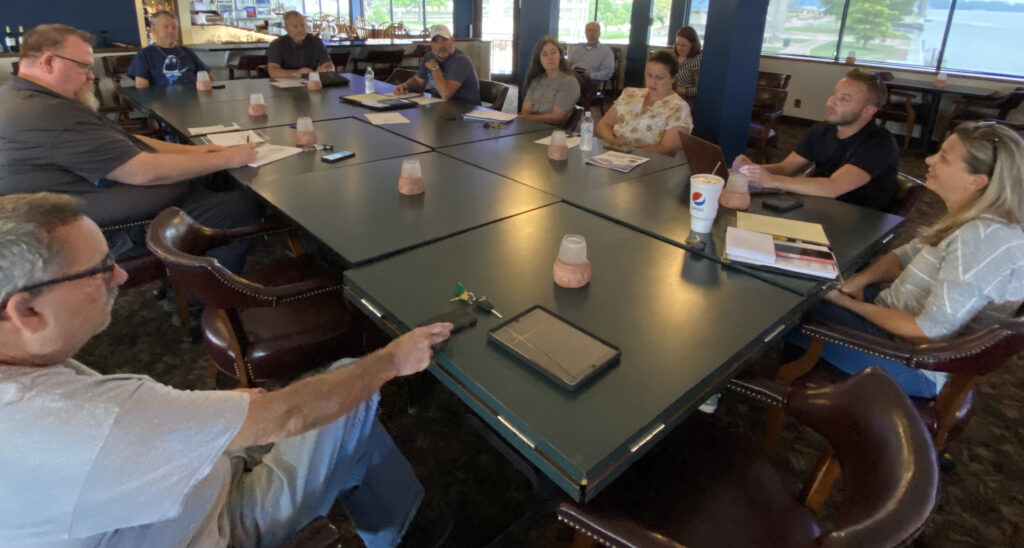‘It’s a hard ask’: Riverfront Corporation to request city, county, Park Board to give more money to bury Ameren power lines

QUINCY — The Quincy Riverfront Development Corporation already has $750,000 pledged for the burial of power lines along the Quincy riverfront.
Corporation members now plan to go to three governing bodies in Quincy in early October to ask for $650,000 more. The $1.18 million project calls for the lines to be buried in Clat Adams Bicentennial Park, starting at about 400 feet north of Broadway south to Hampshire.
Early indications after Wednesday’s meeting at the Quincy Boat Club are it’s going to be tough sledding for the corporation.
The City of Quincy has pledged $200,000 in TIF money for the project, Adams County has budgeted $200,000 and state Sen. Jil Tracy secured a $350,000 Illinois Capitol grant earmarked for “riverfront development.”
Rick Ehrhardt, a member of the Riverfront Development Corporation, spoke at the Sept. 14 meeting of the Quincy Park Board and asked for a $100,000 donation. Executive Director Rome Frericks and Park Board Commissioner John Frankenhoff both expressed concerns during that meeting, with Frericks saying, “We have a lot on our plate.”
Jason Parrott, community development planner for the city, told the Riverfront Corporation the deadline is Sept. 30 to accept the $350,000 Illinois Capitol grant. Corporation member Melanie Allen said she would contact City Engineer Steve Bange to find out if the deadline could be extended 30 days and if D&L Excavating, the contractor for the grant, would extend the prices in the bid for 30 days.
If the deadlines are extended, the corporation will send members to the Adams County Board’s Finance Committee meeting on Oct. 10, the Quincy Park Board meeting on Oct. 11 and the Quincy City Council meeting on Oct. 16 to make presentations for their requests. They will ask the County Board and the City Council to give $150,000 more than what each has pledged. They will ask the Park Board for $350,000.
“$350,000 should be asked of all taxing entities,” corporation member Duane Venvertloh said. “That doesn’t mean that they will be able to, but if this is truly a partnership and $350,000 is what the state of Illinois grant is for, this would make it an equal sum game.”

Allen said the corporation still needs $434,700 to complete the burial of the power lines. No contingency money had been budgeted until the corporation opted to ask the three taxing bodies for more money.
Mayor Mike Troup asked corporation members if they had reached out to County Board members or Park Board members to get their support.
“That was the idea,” replied Tieraney Craig, president of the Riverfront Corporation. “I think Duane and Mike (Mahair, another corporation member) were supposed to kind of take the lead. I think Mike did do his due diligence as far as the County Board, but I don’t know that anybody’s really dug into the Park Board.”
Jarid Jones, a corporation member and the president of the Quincy Park Board, said he appreciated individual phone calls but believes a group effort will be more effective.
“That way, communication is open. Conversation is open,” he said. “We get to the point of it very quickly instead of individual phone calls, which I don’t think would be helpful in this situation right now, especially with the last (Park Board) response.”
When he learned the Park Board would be asked for $350,000, Jones said, “That’s a big jump from the previous numbers. Like that’s a big, big jump. I think that’s the thing that’s turning everybody off.”
Jones said some projects the Park Board recently approved — such as an irrigation replacement project at Westview Golf Course, the installation of synthetic turf fields in the Wavering Park complex, and an all-inclusive playground, shelter and restroom at Wavering Park — “felt a little bit better” than burying power lines.
“I’m not saying to put in a playground or something down here,” Jones said. “I’m saying the things (that were approved were) better for the momentum at the time. Then someone really shot themselves in the foot by asking us for this money of the day of our (Park Board) meeting and emailing each individual commissioner. S**tty approach.
“Timing is another thing without raising taxes. It’s just a hard ask.”
Dave Bellis, the County Board’s representative on the corporation, said asking the County Board for more money is “going to be a tough one.”
“We’ve got a lot of dollars going out on unexpected things,” he said.
Asked after the meeting about the corporation’s upcoming request to the city, Troup said, “It’s the same thing. It’s a tough issue. Everybody keeps using TIF dollars, but there’s not an infinite amount of money. That’s why our City Council would like to see what the Park District is going to do and what the County Board going to do before they’re asked for a decision.”
The corporation also voted to apply for a $50,000 planning grant from the Illinois Arts Council for a proposed amphitheater near the intersection of Front and Hampshire. An amphitheater was part of the Riverfront Master Plan that was created by SWT Design out of St. Louis in 2021.
“We’ve noticed with state grants and federal grants, they’re starting to use the approach of you apply for a planning grant first,” Parrott said. “Then by landing a planning grant, you’re in line for the funding to fund what you were planning to do. We’re seeing that more and more.”
Arts Quincy Executive Director Laura Sievert will write the planning grant, due next month, for the corporation. She said an amphitheater has “always been on my radar.”
“It’s sort of an ‘If you build it, they will come’ sort of situation,” she said. “Not just with the arts but also all types of community events and concerts. If we had it down here, I could see Fishing for Freedom or the Fourth of July celebration, all those great things that sort of follow a great outdoor space.”
The corporation could use the grant for different purposes like site selection, traffic studies, engineering, or drawings. Sievert thought the Illinois Arts Council would be interested down the road to help fund the amphitheater project.
“I have very, very high hopes on getting it funded,” she said. “(The IAC is) very concerned right now of being seen interacting with the rural parts of the state. They don’t want it to look like all their money goes to Chicago. We have a good project that’s already got buy in, a master plan and all of these things. I can’t imagine them saying no.”
Sievert said the Historical Society of Quincy and Adams County recently received a $1.5 million grant from the IAC. The money was used to replace the roof and add a room off the back of the History Museum. She said the National Endowment for the Arts and ArtPlace America also offer large grants.
“They’ve both got this new focus on rural development,” Sievert said. “So yeah, I’m hopeful for it.”
The Riverfront Development Committee has previously said power line burial project is the first step before it can start other improvements. However, Craig said after the meeting that if the committee doesn’t raise enough money to cover the power line burial, the money raised so far could be re-directed to another riverfront project — possibly the amphitheater.
“We gather back around the table and come up with Plan B,” she said.
“The amphitheater doesn’t affect the power lines. The power lines are not running through the amphitheater area, so we could proceed with the amphitheater. We have multiple projects, and we’re going to look at (the amphitheater and the power lines) as two separate projects. We’re going to go after them both at the same time.”
Miss Clipping Out Stories to Save for Later?
Click the Purchase Story button below to order a print of this story. We will print it for you on matte photo paper to keep forever.

